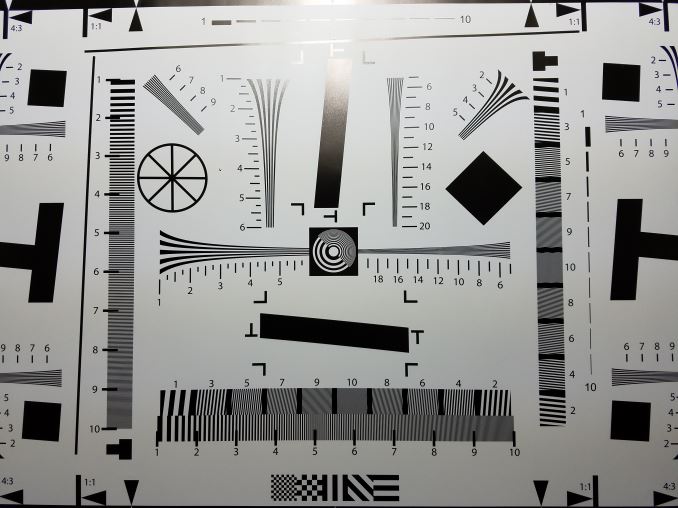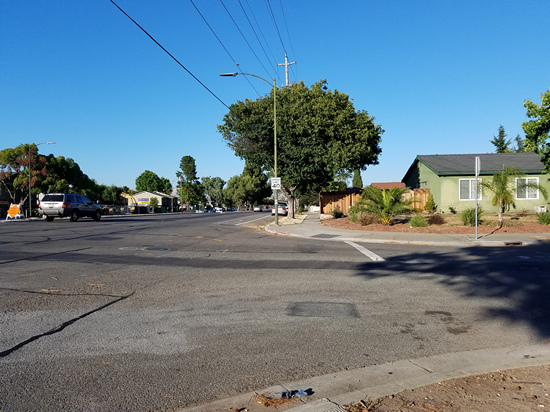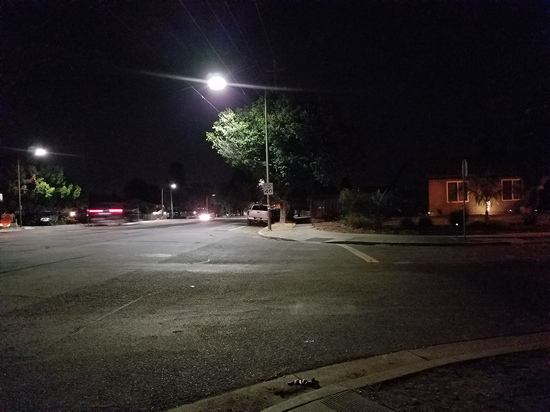The Samsung Galaxy S7 and S7 edge Review: Part 2
by Joshua Ho on July 5, 2016 8:00 AM ESTStill Image Performance
Now that we’ve covered the user experience associated with the camera, we can start to go over the output that the Galaxy S7 is capable of producing. In order to do this we continue to carry over the same sorts of benchmarks that we’ve used in 2015, which is to say that we use a combination of standardized test charts with semi-controlled lighting along with real world testing to try and see how the device actually performs outside of rather simplistic tests.
Starting with the ISO chart we can see quite clearly that the Galaxy S7 has lost noticeable ground in resolution relative to the Galaxy S6 when you look at the center of the photo, but at the edges of the photo the Galaxy S7 actually appears to have the lead against the Galaxy S6. The same sort of story plays out with the HTC 10 as it clearly has more detail than the Galaxy S7 at the center of the photo but the edges of the HTC 10’s test chart shot shows clear defocus that gets pretty terrible at the corners.
| Daytime Photography |
In our daytime landscape test we can see the sorts of effects that the smaller pixel size has had on the Galaxy S7. Relative to the Galaxy S6, there’s almost no delta in the detail resolved, but right away it’s obvious that the sharpening halos have become even more obvious than before which is concerning. These observations also apply to the Galaxy Note5, although the Note5 is a bit sharper due to some changes in image processing relative to the Galaxy S6. However I wouldn’t say that there’s an appreciable difference one way or another here.
Relative to the iPhone 6s, the Galaxy S7 is basically identical in detail as well, but the iPhone 6s tends a bit warmer and has much, much less obvious post-processing that is extremely obvious on the distant trees that contrast against the sky. This is actually kind of surprising for me given that the Galaxy S7 has a larger sensor, but I suspect the dual pixel AF, wider aperture, and slightly wider field of view are eliminating whatever advantages increased sensor size might bring.
Compared to the HTC 10, the Galaxy S7 has better edge contrast, but generally it looks like textures have better detail on the HTC 10. I haven’t been able to do extensive RAW comparisons yet but it looks like HTC is just blurring luminance noise out too aggressively here for whatever reason. I’m not sure what causes this in image processing, but given how other OEMs like LG and Apple are fully capable of mostly eliminating color noise from their photos while retaining most of the detail that their cameras are capturing HTC would do well to do the same.
The final point of comparison I want to make here is the LG G4/G5. Although the G5 seems to have started an AF run in the middle of the capture, the areas where the photo is actually focused are arguably better than what the Galaxy S7 can put out. Even next to the G4, the Galaxy S7 falls short. I’m honestly not sure why LG doesn’t get more credit here, because next to Apple they seem to have the best image processing algorithms in the industry.
| Low Light Photography |
While daytime quality is critical, I suspect most people are going to be interested in low light performance as this is usually the hardest test for any OEM to get through. It’s taken years for OEMs to start shipping acceptable image processing in low light that wasn’t just a smeary and oversharpened mess, so getting this right is pretty important to say the least.
Unfortunately, the Galaxy S7 is just a bit disappointing here. The LG G5 is just clearly better here as noise reduction is better in pretty much every way and it looks a lot more natural due to less obvious sharpening halos. I would also argue that the HTC 10 is also better here due to its better texture detail and better handling of shadow detail, even if edges are softer.
The Galaxy S7 also has this strange streaking light flare with bright sources that I just couldn’t get rid of despite wiping the lens multiple times with a clean cotton cloth, which was done for every phone in this test before taking the picture. In fairness, the Galaxy S7 is still the fastest camera out of everything in this test, but it comes at the cost of rather disappointing output for me. The Galaxy Note5 looks like it might even be slightly better than the Galaxy S7, which is a weird regression when the general idea of going to a larger pixel size is to get better low light performance. As alluded to earlier, the cost of the dual pixel AF system may be sensitivity due to the dual photodiodes and light barrier to generate a phase detection pixel. While this is just one test example I’ve spent a lot of time playing with the camera on the Galaxy S7 and in general its low light performance is fairly similar to what you see above. The only time where I really see the Galaxy S7 lead is in extreme low light conditions where everything is reaching ISO and shutter speed limits.
Overall, while the user experience of the Galaxy S7's camera is industry-leading, the Galaxy S7 represents a somewhat unfortunate sidegrade in camera quality at best. I would argue that Samsung has gone in the wrong direction with their camera processing as they seem to be relying on strong noise reduction and sharpening more than ever before. The Galaxy S7 also retains the oversaturated color rendering of the Galaxy S6. While I'm sure most people are happy with these results, Apple and LG tend to have more accurate color rendition with their cameras. While HTC doesn't quite nail color rendition, they are arguably closer to reality than Samsung is. Hopefully with their next device they manage to maintain their class-leading speed, but with better post-processing and overall image quality.



















266 Comments
View All Comments
lilmoe - Tuesday, July 5, 2016 - link
No...................... (wiping eyes)lilmoe - Tuesday, July 5, 2016 - link
OK, now that I've read the whole review (and some parts twice), I can come to two conclusions.1) The author is sort-of unhappy with Samsung's decision to dual source the SoC.
2) Lots of testing metrics (and data) don't match my personal experience with the phone (Edge, Exynos version), nor the hundreds of videos and reviews online. The only significant issue I have is with the front facing camera compared with other new hardware; it could be a LOT better (but I'm not a huge selfie person).
The Exynos variant is significantly better than the SD variant this time around, probably because Samsung's software leans more to higher core count, but also because it takes advantage of the *better* co-processors on Samsung's silicon. The Exynos variant has better image/video post processing, better audio, better and more sustained performance, better RAM management and significantly better battery life compared to the SD variant. Too bad all the hype Qualcomm has been selling for the additional parts didn't live up.
That being said, I do agree, to some extent, about the radios. They're definitely better than previous models (after the migration to metal design), but my wife's Note4 has noticeably better reception. Not huge, but noticeable. In that regard, nothing beats good ole' plastic designs.
cknobman - Tuesday, July 5, 2016 - link
The Apple bias you get from this site is annoying at best.Everything in this review is laced with a undertone of how iPhone is just as good or better.
Camera on the S7 is actually pretty danged amazing and easily better than what iPhone has right now. Other sites and reviews have posted their figures and results and they all show it but for some reason here the camera is just ok?
Battery life on the S7 is actually quite amazing and noticeably better than past Galaxy iterations.
The design is well executed and I did not see any mention of the water resistant feature which is a nice inclusion most other manufacturers dont even have.
I'm a Windows phone user but I did recently upgrade my son to the S7.
ikjadoon - Tuesday, July 5, 2016 - link
While Anandtech is getting better at moving away from esoteric benchmarks to show "in the lab" performance...these reviews were not holistic.How can you write a review comparing the iPhone 6s to the Galaxy S7 and NOT mention water resistance?
I think it's because, in the end, performance is what matters to Anandtech above all else. If the device doesn't perform well in day-to-day use, then whatever other benefits it may have are always painted against that background.
ikjadoon - Tuesday, July 5, 2016 - link
Why can't we edit? Yeesh. "Doesn't perform well compared to its equally-priced peers"...DERSS - Wednesday, July 6, 2016 - link
iPhone 6s/Plus already has water resistance, Apple covered the mainboard with special foam, and there are other measures. It is tested in videos, and it works. So the degree here is that SGS 7/Edge has better water resistance. The practical difference, though, is debatable.pablo906 - Friday, July 8, 2016 - link
I dropped my 6s in the sink full of water. Pulled it out shook it off, sucked the water out of the speaker holes, charging port holes, and headphone holes and it was fine. I've never had an iPhone survive that. They're not water proof, but their water resistance is certainly far better than it used to be and can survive day to day spills and accidents unlike the older models. That's nowhere near as good as the waterproof Samsung phones I've seen go underwater fully submerged for more than a few seconds in videos and come out alive, but it's an improvement. I agree with you here. If you want to compare water resistance among phones, then you have to take the non water resistant Android and get it wet measure the effects and then do the same with the Apple phones. I think that's a pointless road to go down. It's better to just mention the water proofing in the description or not at all and move on.theduckofdeath - Saturday, July 9, 2016 - link
I hope you don't live by that belief, DERSS. most mainboards has a protective coating, including the one in your PC. Mostly for dust and humidity protection. The ports, camera, sensors and most other things on the iPhone aren't water resistant. So... You might get lucky to survive getting it wet, but it most likely won't work properly after it.My previous (wireless) keyboard survived a glass full of Coke spilled all over it once. No issues, I just rinsed it off and let it dry off for a couple of days. Somehow I managed to spill another glass on in a month later (yay! I guess I subconsciously wanted a new keyboard) and it instantly fried.
theduckofdeath - Saturday, July 9, 2016 - link
*itBigbank - Tuesday, January 9, 2018 - link
BooGo get wet sinker